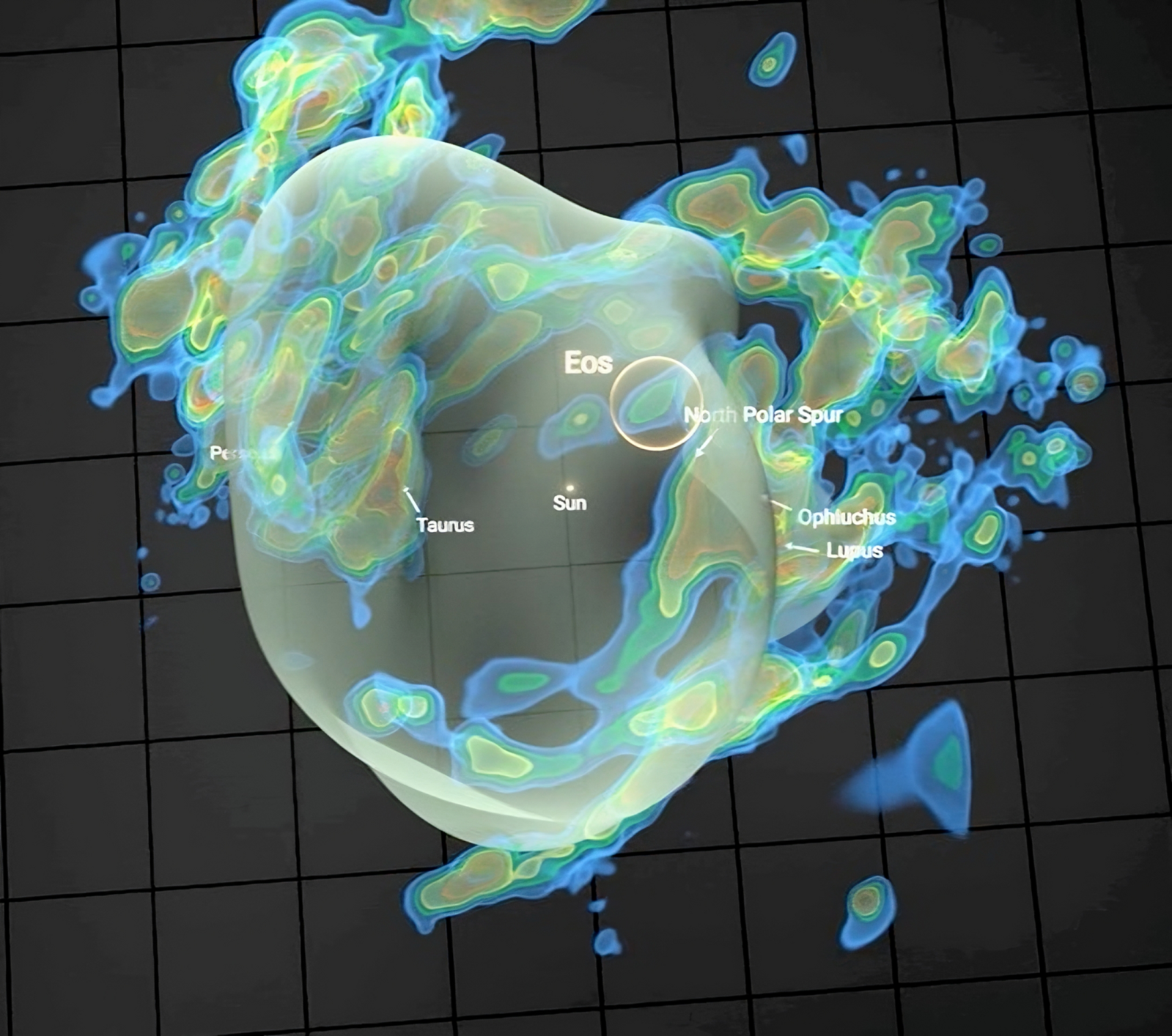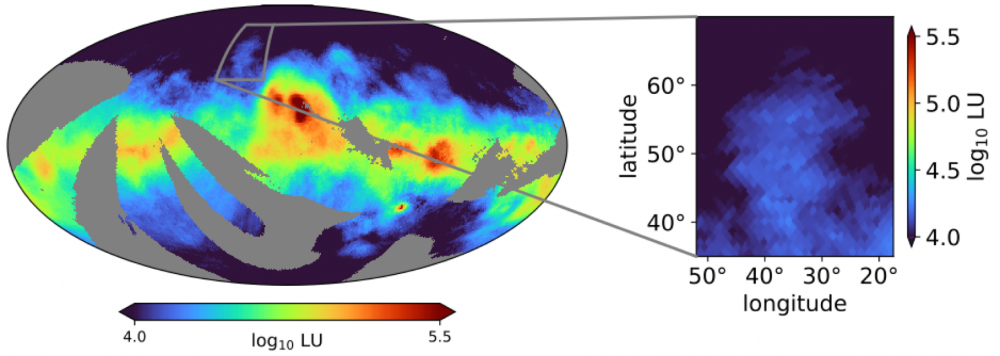Follow us on Google News (click on ☆)
An international team, including researchers from the Department of Astrophysics (DAp), has found in archival data a dark molecular hydrogen cloud located 300 light-years from the Sun, at the edge of the Local Bubble. This is the first molecular cloud discovered through H2 fluorescence and a fine example of studying a cloud's interaction with a superbubble.

3D rendering of dust clouds in the solar neighborhood (dust density increases from blue to red), viewed from above the Galactic plane, showing the shape of the Local Bubble cavity (in transparent yellow), the location of the Eos cloud (within the circle), and the position of some known molecular clouds.
The study was published in the journal Nature Astronomy.
The space between stars is filled with gas and dust. This medium is stirred by currents, shaken by shock waves from stellar explosions, irradiated by ultraviolet (UV) rays from stars, and sculpted by gravity. It is constantly in motion, with gas circulating between vast, tenuous, hot bubbles caused by stellar activity and more compact, cold, dense clouds where new stars are born.
The gas in these dense clouds is mainly composed of molecules, but the most abundant, H2, radiates so little in these cold environments that we must use the radio emission of much rarer CO molecules to map molecular clouds. However, it is known that large amounts of molecular gas escape CO observations.
Yet, in the presence of UV rays, H2 molecules can become excited and glow through fluorescence, much like stones or animals that display vibrant colors under black light (UV).
The team used H2 fluorescence maps obtained between 2003 and 2005 by the FIMS/SPEAR instrument aboard the Korean satellite STSAT-1. Combined with a set of CO emission maps, radio emission from hydrogen atoms, infrared emission from dust, and X-ray absorption by gas, the authors discovered a previously unknown molecular cloud with a mass 3,400 times that of the Sun, close to us but unrecorded due to its lack of bright emission beyond this faint fluorescent glow.

Position of Eos on the all-sky far-ultraviolet molecular hydrogen fluorescence emission map.
This cloud, named Eos after the goddess of dawn, is the first molecular cloud discovered through H2 fluorescence. It does contain a CO-visible clump, but this reveals only the tiny tip (less than 1%) of the iceberg.
The cloud extends between 300 and 400 light-years from the Sun. It is very likely associated with the edge of the Local Bubble (an animated version is available, and an interactive 3D map is accessible with Google Chrome or Firefox).
The latter is a large cavity of scorching gas (a million degrees), inflated by multiple stellar explosions to a size of 2,000 to 3,000 light-years. The Sun has been traversing it for 5 to 7 million years. In its expansion, the Bubble has swept up and compressed a shell of dense gas around its periphery, of which the Eos cloud is likely a part.
Measurements indicate that Eos's days are numbered, as the UV rays that allow it to glow through fluorescence also dissociate the H2 molecules, which will be destroyed within 5 or 6 million years. Until then, Eos provides a nearby laboratory to study how a cloud evolves in contact with the scorching gas and UV and X-rays of a superbubble, a common occurrence in the interstellar gas cycle within galaxies.